Picto Diary - 15 January 2016 (AM) - Village Life
The Margaret Taylor Dance Troupe visited Sardarpura Village, eight miles from Shahpura, this morning.
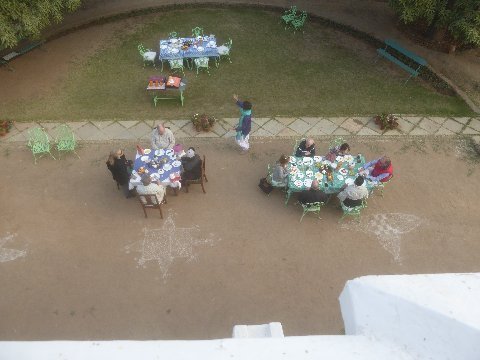
Above: Breakfast. The Margaret Taylor Dance Troupe. Shahpura Bagh. Shahpura, Rajesthan, India. 15 January 2016.
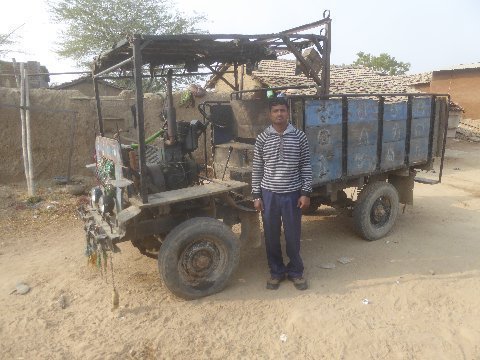
Above: Uh... truck? Sardarpura village. Rajesthan, India. 15 January 2016.
Contrived contraption. Single cylinder, low RPM, high torque, industrial engine (thumper) used for water pumps, among others.
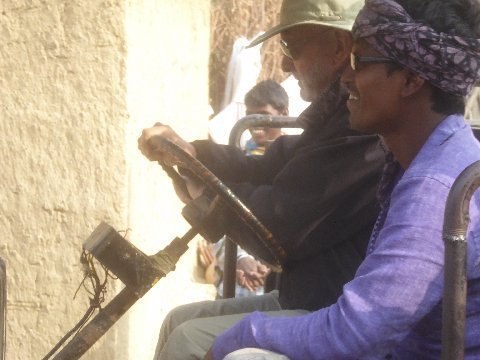
Above: Admiral, with friend, drives Sardarpura village truck. Sardarpura village. Rajesthan, India. 15 January 2016.
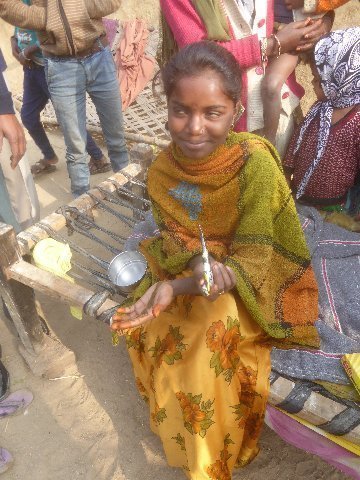
Above: Henna girl. Sardarpura village. Rajesthan, India. 15 January 2016.
Henna girl, holding brush with which she painted a design on the back of my right hand.
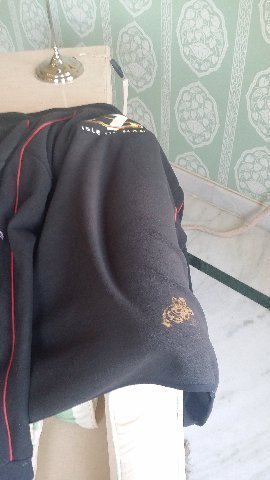
Above: Henna design on back of my jacket. Raj Mahal Palace Hotel. Jaipur Rajesthan, India. [16] January 2016.
After Henna girl painted the design on the back of my hand, I immediately forgot about it. Ten or so minutes later I looked at the design and it was smudged.... hardly discernable. I thought, wow, what happened? Was Henna girl using invisible ink? A few minutes later, Click (new name for Heat) said, "Steve, what's that on the back of your jacket?" Inadvertently, unwittingly, I had clasped my two hands behind my back and imprinted the fresh henna design onto the back of my fleece.
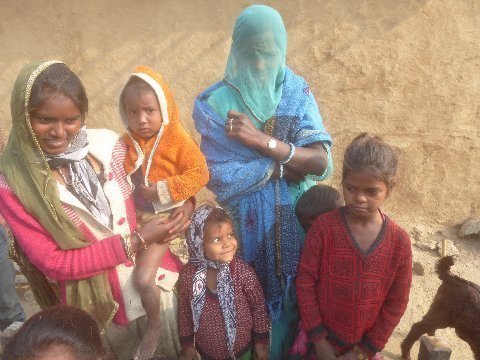
Above: Village people. Sardarpura village. Rajesthan, India. 15 January 2016.
We are accustomed to seeing some Muslim women cover their face.
In Rajasthan, some Hindu women also cover their face, as seen in this image.
Per Ajay, a Hindu woman who comes to live in a new village by marriage will cover her face. If she is in her own village, she won't cover her face. The tradition derives from the period when Muslims invaded India around 800 AD. Then, Muslim invaders wantonly ravished the Hindu women. Hindu elders had Hindu women cover their faces to make them less vulnerable to harassment. The veil tradition has carried on in Rajasthan village life notwithstanding much improved communal relations between Muslims and HIndus today.
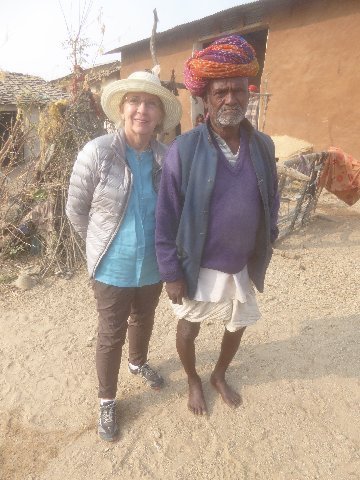
Above: TIMDT and village elder. Sardarpura village. Rajesthan, India. 15 January 2016.
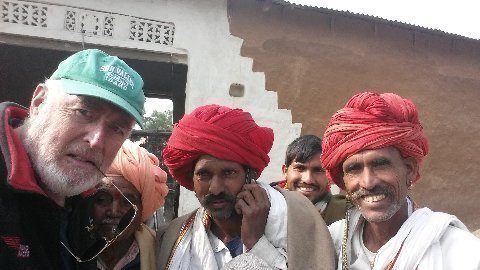
Above: The Bishop and sheepherder brothers. Sardarpura village. Rajesthan, India. 15 January 2016.
The man on the right is father to one of the employees at Shahpura Bagh. I didn't get a picture of the young man, who was neatly attired in western clothing, and who accompanied us on the visit to his village. As India's economy improves, more young people will seek opportunity outside of the village. One wonders how long the village farming lifestyle will last.
The two brothers looked like they were doing pretty well for themselves. They showed us the courtyard of their residence where a hundred or so sheep were standing. They, their wives and daughters were wearing "a ton" of gold and silver jewelry. Cell phones are de rigueur. One brother is using the phone as the above image is captured.
Notwithstanding the seeming timelessness of Indian village life, change is afoot.
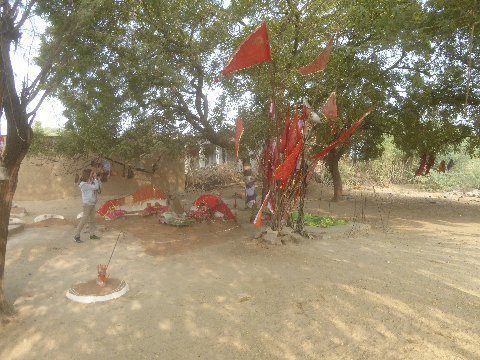
Above: Worship spot. Sardarpura village. Rajesthan, India. 15 January 2016.
The red flags are Hindu ornaments. The green cloths are Muslim ornaments. Members of both faiths live in the village.
This is another example of the seeming success of multiculturalism in India. Will communal cooperation continue with the rise to power of the BJP, a political party with strains of Hindu nationalist - India for Hindus - thinking?
Tribalism seems to be gaining purchase in the world today. Scotland's yearn for independence, Catalonia's agitation in Spain, and Islamic movements in Africa are contemporary tribal stirrings that come to mind.
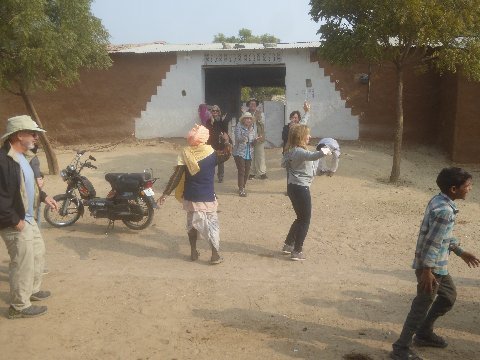
Above: Spago and village elder boogy. Sardarpura village. Rajesthan, India. 15 January 2016.
One of the industrial engine, contrived trucks drove up to near this spot blaring rhythmical Indian music through a loud speaker. Caught up in the moment, former show dancer, Spago, started to boogy. She was joined by the village elder.
Members of the Margaret Taylor Dance Troupe, in the background of the image, clap to the rhythm.
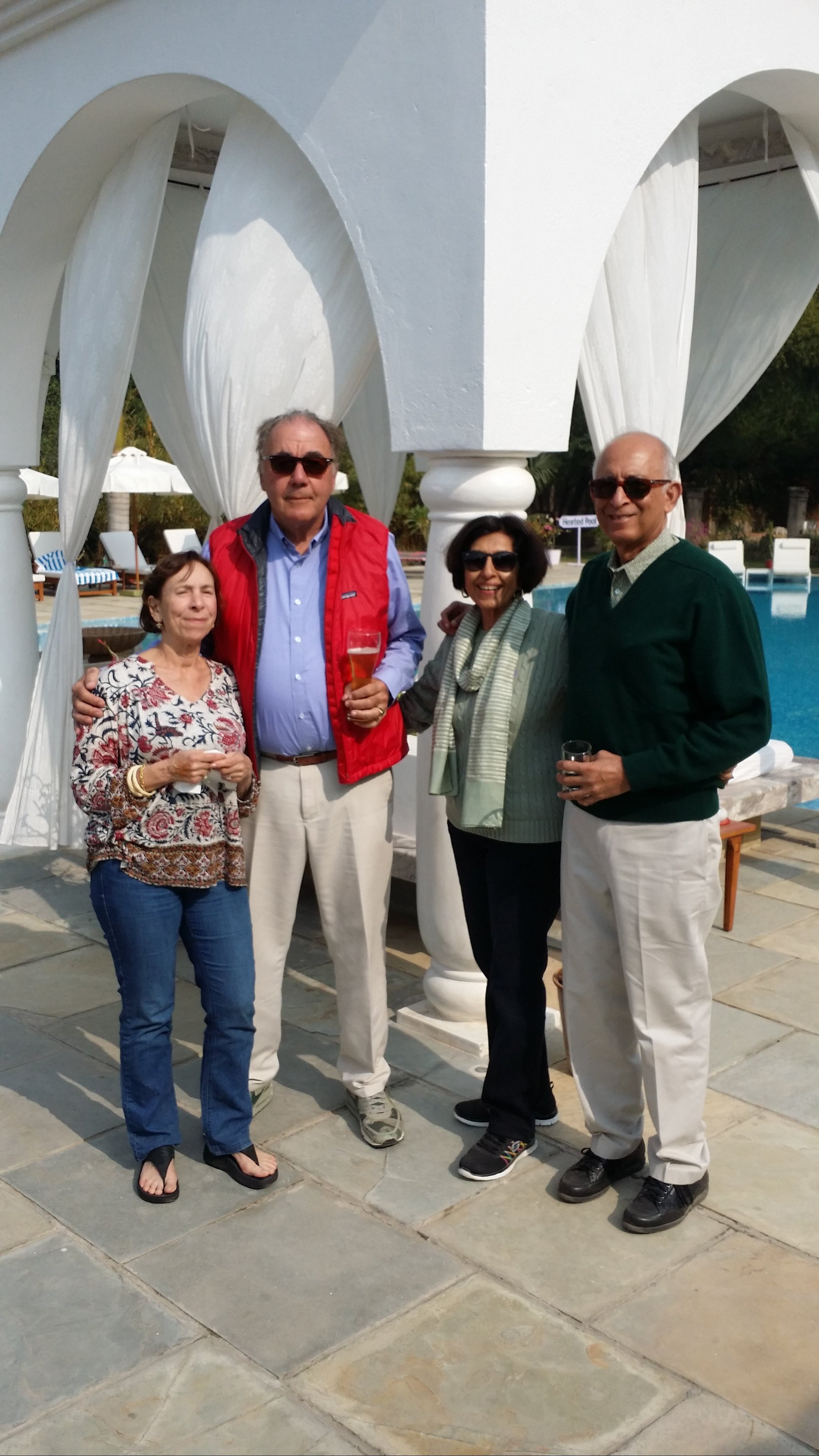
Above: Comic Mom, Maharaja (new nick name for 1%), Diction, and Zubin. At lunch. Shahpura Bagh, Rajasthan, India. 15 January 2016.
Members of the Margaret Taylor Dance Troupe traveling in India.
Addendum:
Steve,
Great diary today! Very informative.
Country Boy,
Greenwich, CT
finally got to see picto on a big screen! great especially the hindu information. thanks Steve.
Brand,
Venice, CA
Great pictures what an adventure.
LaDoc and LaPsy,
Los Angeles, CA
How the World Loved the Swastika until Hitler Stole It - BBC
http://www.bbc.com/news/magazine-29644591
Mrs. Driggs
Salt Lake City, UT
Steve,
Thanks for the travelogue. It brings back fond memories of my various visits there.
In the economic dual between India and China, I have a feeling that India will emerge the winner, after a good deal of time, since the Indian way of life, permitting all of the clamor of a democracy to be open for all to see, will eventually yield a greater economy than China’s closed shop set-up.
Your opinion?
“Hello” to Margaret,
Ahn Rhee, Larkspur, CA
I agree.
I think, in the case of the Indian usage, you would refer to the symbol as a fylfot rather than a swastika, although the terms have become interchangeable over time.
Jack Aroon, Mahwah, NJ